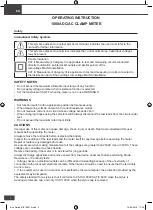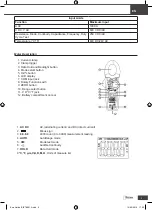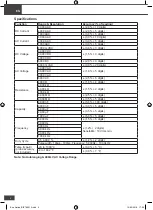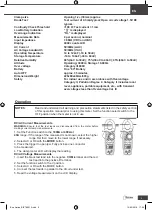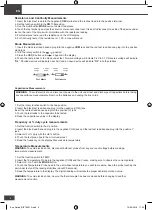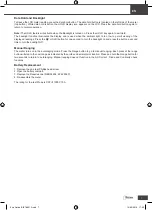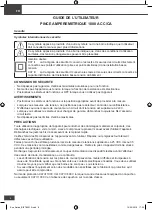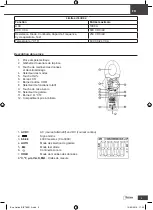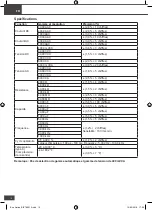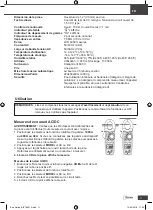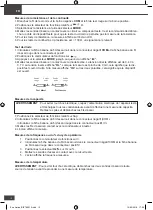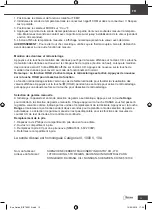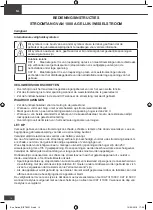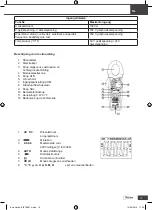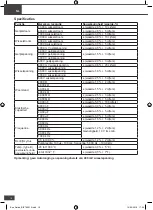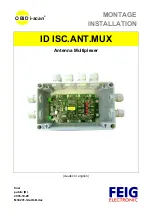
EN
2
OPERATING INSTRUCTION
1000A DC/AC CLAMP METER
Safety
International Safety Symbols
This symbol, adjacent to another symbol or terminal, indicates the user must refer to the
manual for further information.
This symbol, adjacent to a terminal, indicates that, under normal use, hazardous voltages
may be present
Double insulation
CAT II Measurement Category II is applicable to test and measuring circuits connected
directly to utilization points(socket outlets and similar points) of the
low-voltage MAINS installation.
CAT III Measurement Category III is applicable to test and measuring circuits connected to
the distribution part of the building’s low voltage MAINS installation.
SAFETY NOTES
• Do not exceed the maximum allowable input range of any function
• Do not apply voltage to meter when resistance function is selected.
• Set the function switch OFF when the meter is not in use.WARNINGS
•
WARNINGS
• Set function switch to the appropriate position before measuring.
• When measuring volts do not switch to current/resistance modes.
• Do not measure current on a circuit whose voltage exceeds 240V.
• When changing ranges using the selector switch always disconnect the test leads from the circuit under
test.
• Do not exceed the maximum rated input limits.
CAUTIONS
Improper use of this meter can cause damage, shock, injury or death. Read and understand this user
manual before operating the meter.
Always remove the test leads before replacing the battery.
Inspect the condition of the test leads and the meter itself for any damage before operating the meter.
Repair or replace any damage before use.
Use great care when making measurements if the voltages are greater than 25VAC rms or 35VDC. These
voltages are considered a shock hazard.
Remove the battery if the meter is to be stored for long periods.
Always discharge capacitors and remove power from the device under test before performing Diode,
Resistance or Continuity tests.
• Voltage checks on electrical outlets can be difficult and misleading because of the uncertainty of
connection to the recessed electrical contacts. Other means should be used to ensure that the terminals
are not «live».
• If the equipment is used in a manner not specified by the manufacturer, the protection provided by the
equipment may be impaired.
The safety standard for a stylus is that it conforms to CATIII 1000V CATIV 600V when the stylus is
wearing a protective cap, and only CATII 1000V when the stylus cap is removed.
Exe_Notice_BIZ 780313.indd 2
15/05/2019 17:35


